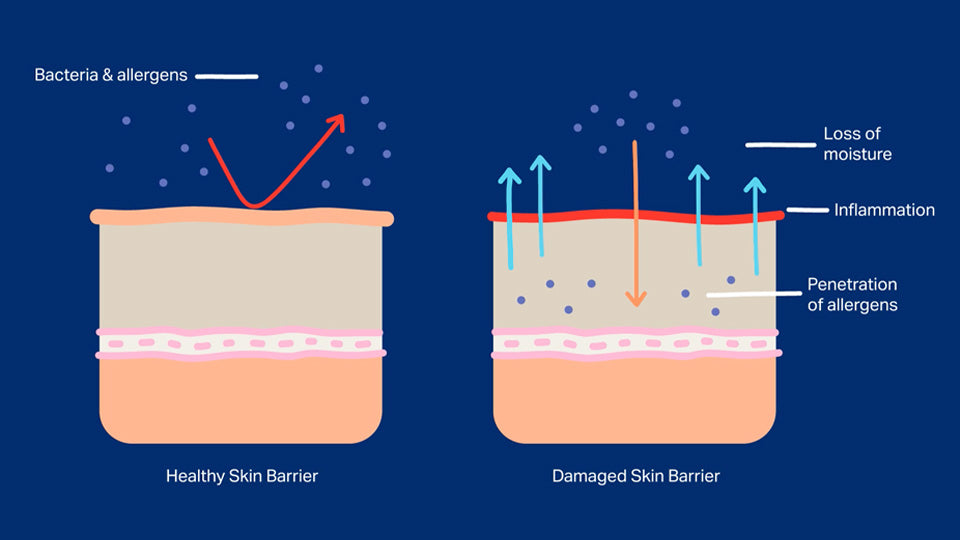Introduction
Your skin’s barrier is its first line of defense. Think of it as a shield made of lipids, proteins, and natural moisturizers that protect you from environmental stress, bacteria, and water loss. When this barrier is compromised, you’ll notice irritation, dryness, and even breakouts. The good news? With the right strategies, you can repair your skin barrier and restore healthy, resilient skin.
What Is the Skin Barrier?
The skin barrier, also known as the stratum corneum, is the outermost layer of your skin. It’s made up of:
-
Corneocytes (skin cells) acting as bricks
-
Lipids (ceramides, cholesterol, fatty acids) acting as mortar
Together, they form the “brick-and-mortar” structure that keeps moisture in and irritants out.
Signs Your Skin Barrier Is Damaged
Wondering if your barrier needs help? Look out for these signs:
-
Persistent dryness or flakiness
-
Redness or inflammation
-
Stinging or burning when applying skincare
-
Increased breakouts or sensitivity
-
Skin feels tight, itchy, or rough
Common Causes of Skin Barrier Damage
-
Over-exfoliation with strong acids or scrubs
-
Harsh cleansers that strip natural oils
-
Sun damage from UV exposure
-
Cold weather or low humidity
-
Stress and lack of sleep
-
Overuse of active ingredients (retinoids, AHAs, BHAs)
-
Underlying conditions like eczema or rosacea
How to Repair a Damaged Skin Barrier
1. Simplify Your Routine
Strip your routine down to the essentials: gentle cleanser, moisturizer, sunscreen. Avoid layering multiple strong actives.
2. Use Barrier-Repair Ingredients
Look for these powerhouse ingredients:
-
Ceramides – replenish lost lipids
-
Niacinamide – reduces redness, strengthens the barrier
-
Hyaluronic Acid – restores hydration
-
Squalane – mimics natural skin oils
-
Panthenol & Allantoin – soothe irritation and support healing
3. Moisturize Generously
Opt for moisturizers rich in emollients (oils, butters) and occlusives (petrolatum, shea butter) to lock in hydration.
4. Protect With Sunscreen
UV rays worsen barrier damage. Apply a broad-spectrum SPF 30+ daily, even indoors.
5. Avoid Triggers
Cut down on hot showers, fragranced products, and excessive exfoliation until your skin feels balanced again.
Long-Term Strategies to Maintain a Healthy Barrier
-
Stick to pH-balanced cleansers (around 5.5)
-
Introduce actives (retinol, acids) slowly and buffer with moisturizer
-
Keep your environment hydrated with a humidifier
-
Eat a diet rich in omega-3 fatty acids and antioxidants
-
Prioritize sleep and stress management
Key Takeaway
Your skin barrier is the foundation of healthy skin. When damaged, it leaves skin vulnerable to irritation, dryness, and premature aging. By recognizing the signs early and following science-backed repair strategies—like barrier-strengthening ingredients, hydration, and sun protection—you can restore balance and resilience.
At Purelab Care, our formulations are designed to protect and repair the skin barrier with halal-certified, clinically tested ingredients—so your skin stays calm, hydrated, and radiant.



